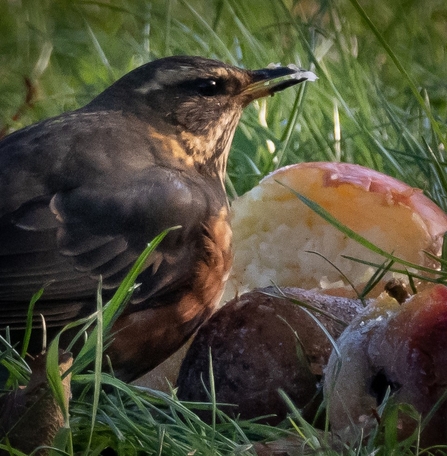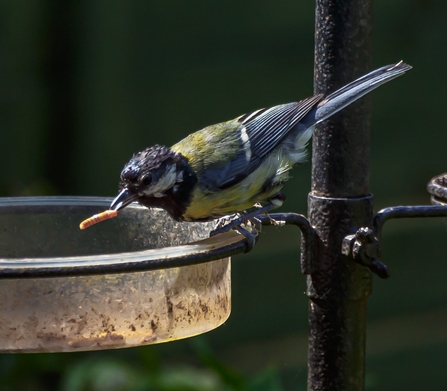Seeds or mealworms?
Straight seeds include red and white millet, black sunflower, oil seed rape and peanuts. Seed mixes attract a greater mix of bird species. Husk-free seeds has less mess to clear up (from the disregarded shells) and birds that can’t crack husks, such as blackbirds, can also eat the mix. Some husk-free mixes also contain other foods like dried mealworms and suet pellets.
Dried or live mealworms are brilliant food to provide in the breeding and fledgling season.
“I find that dried mealworms are the most popular food with all the birds, but the starlings in particular can eat a whole feeder in about half an hour. I have tried live mealworms but they escaped in the garage where I keep the bird food which was quite entertaining!” (Stephanie Chadwick).
Don’t deadhead
Rhiannon and her family in BS15 don't deadhead some plants where the birds feed, such as teasels, so that birds like goldfinches will come down for the seed heads in autumn and winter.



